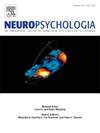On the lasting impact of mild traumatic brain injury on working memory: Behavioural and electrophysiological evidence
IF 2
3区 心理学
Q3 BEHAVIORAL SCIENCES
引用次数: 0
Abstract
Despite increasing recognition of the significance of mild traumatic brain injury (mTBI), the long-term cognitive consequences of the injury remain unclear. More sensitive measures that can detect subtle cognitive changes and consideration of individual variability are needed to properly characterise cognitive outcomes following mTBI. Here, we used complex behavioural tasks, individual differences approaches, and electrophysiology to investigate the long-term cognitive effects of a history of mTBI. In Experiment 1, participants with self-reported mTBI history (n=82) showed poorer verbal working memory performance on the operation span task compared to control participants (n=88), but there were no group differences in visual working memory, multitasking, cognitive flexibility, attentional control, visuospatial ability, or information processing speed. Individual differences analyses revealed that time since injury and presence of memory loss predicted visual working memory capacity and visuospatial ability, respectively, in those with mTBI history. In Experiment 2, participants with mTBI history (n=20) again demonstrated poorer verbal working memory on the operation span task compared to control participants (n=38), but no group differences were revealed on a visuospatial complex span task or simpler visual working memory measures. We also explored the electrophysiological indices of visual working memory using EEG during a change detection task. No differences were observed in early sensory event-related potentials (P1, N1) or the later negative slow wave associated with visual working memory capacity. Together, these findings suggest that mTBI history may be associated with a lasting, isolated disruption in the subsystem underlying verbal working memory storage. The results emphasise the importance of sensitive cognitive measures and accounting for individual variability in injury characteristics when assessing mTBI outcomes.
轻度脑外伤对工作记忆的持久影响:行为学和电生理学证据。
尽管越来越多的人认识到轻度创伤性脑损伤(mTBI)的重要性,但这种损伤的长期认知后果仍不明确。要正确描述轻微创伤性脑损伤后的认知结果,需要能检测到细微认知变化并考虑个体差异的更灵敏的测量方法。在这里,我们使用复杂的行为任务、个体差异方法和电生理学来研究 mTBI 对认知的长期影响。在实验1中,与对照组参与者(88人)相比,自述有mTBI病史的参与者(82人)在操作跨度任务中的言语工作记忆表现较差,但在视觉工作记忆、多任务处理、认知灵活性、注意控制、视觉空间能力或信息处理速度方面没有组间差异。个体差异分析表明,受伤后的时间和记忆缺失的存在分别预测了有 mTBI 史的参与者的视觉工作记忆能力和视觉空间能力。在实验 2 中,与对照组参与者(38 人)相比,有 mTBI 史的参与者(20 人)在运算跨度任务中再次表现出更差的言语工作记忆能力,但在视觉空间复杂跨度任务或更简单的视觉工作记忆测量中没有发现组间差异。我们还利用脑电图在变化检测任务中探索了视觉工作记忆的电生理指标。在与视觉工作记忆能力相关的早期感觉事件相关电位(P1、N1)或后期负慢波中,没有观察到差异。总之,这些研究结果表明,mTBI 病史可能与言语工作记忆存储子系统的持久性、孤立性中断有关。这些结果强调了在评估 mTBI 结果时采用敏感的认知测量方法和考虑损伤特征的个体差异的重要性。
本文章由计算机程序翻译,如有差异,请以英文原文为准。
求助全文
约1分钟内获得全文
求助全文
来源期刊

Neuropsychologia
医学-行为科学
CiteScore
5.10
自引率
3.80%
发文量
228
审稿时长
4 months
期刊介绍:
Neuropsychologia is an international interdisciplinary journal devoted to experimental and theoretical contributions that advance understanding of human cognition and behavior from a neuroscience perspective. The journal will consider for publication studies that link brain function with cognitive processes, including attention and awareness, action and motor control, executive functions and cognitive control, memory, language, and emotion and social cognition.
 求助内容:
求助内容: 应助结果提醒方式:
应助结果提醒方式:


